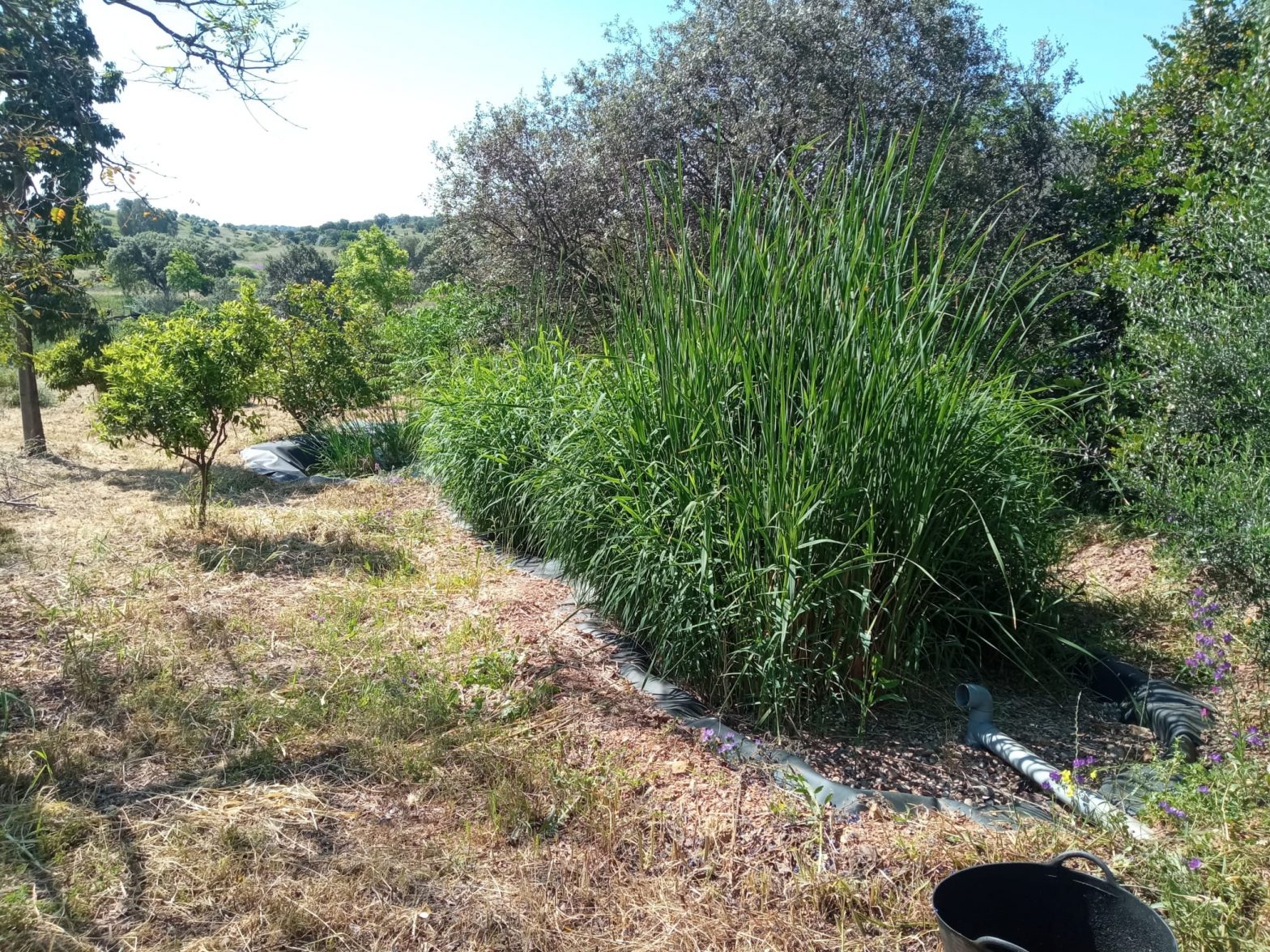
Depuración de aguas grises en Los Portales – Grey water purification at Los Portales
Los sistemas de fitodepuración, también conocidos como humedales artificiales, son sistemas de depuración completamente naturales que aprovechan la aportación de la capacidad depurativa de diferentes tipos de plantas, así como su alta capacidad para transferir oxígeno al agua.
Se dividen principalmente en sistemas de flujo sumergido como el que utilizamos en Los Portales (cuando el agua fluye a través de un medio filtrante) y sistemas de flujo superficial (cuando el agua está en contacto con la atmósfera).
Las ventajas importantes de los sistemas de fitodepuración son que no suelen tener costes energéticos, requieren muy poco mantenimiento y tienen excelentes resultados de depuración.
El factor fundamental, que rige la actividad depuradora de estos sistemas, está representado por las plantas, entre las cuales Phragmites Australis y Typha Latifolia son las más adecuadas y eficaces.
Sistemas horizontales de flujo sumergido utilizados en Los Portales
Un sistema de fitodepuración horizontal de flujo sumergido suele incluir un sistema de pretratamiento con una fosa séptica de tres cámaras en caso de tratamiento de aguas negras o un separador de grasas si sólo se tratan aguas grises. La grasa dificulta los procesos aeróbicos, la difusión de oxígeno en el agua y la degradación de la materia orgánica, por lo que necesita una separación previa.
Durante el paso del agua entre las raíces de las plantas, se producen los principales procesos de depuración:
- La descomposición de la materia orgánica por los microorganismos
- La reducción a nitritos, si hay suficiente materia orgánica
- La absorción de fósforo y metales pesados en el material filtrante.
El funcionamiento de un sistema de fitodepuración se basa en el movimiento lento del agua a través de un medio filtrante de grava, y con la ayuda de plantas acuáticas, enraizadas en el mismo medio filtrante.Las plantas contribuyen al desarrollo de una población microbiana aeróbica eficaz en las zonas más cercanas a las raíces y transfieren oxígeno atmosférico al agua, a través de la parte frondosa de las plantas. Estas bacterias especializadas conducen a la desaparición casi completa de patógenos en las aguas residuales.
Los estanques de depuración se sellan con geomembranas sintéticas impermeables de HDPE o PVC para evitar filtraciones de agua al suelo subyacente.Los materiales filtrantes más utilizados son la grava y las piedras, con diferentes granulometrías. Estos materiales sirven también de soporte para las plantas acuáticas que desarrollan allí sus raíces.
Los sistemas naturales horizontales de flujo sumergido son los únicos sistemas de tratamiento que no requieren energía eléctrica para su funcionamiento, que tienen un rendimiento de depuración muy alto, no producen malos olores y necesitan muy poco mantenimiento. Hay varias formas de disponer del agua depurada; en Los Portales construimos un pequeño estanque que se utiliza para el riego de nuestros frutales. Otras formas pueden ser la infiltración o el almacenamiento del agua en un depósito para su uso posterior.
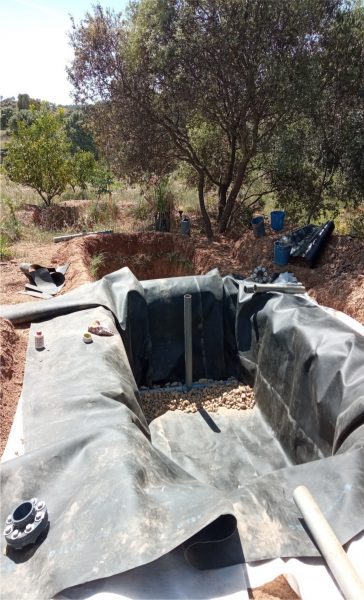

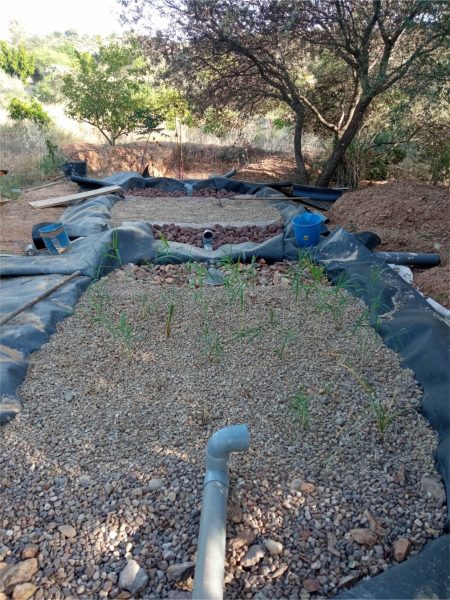
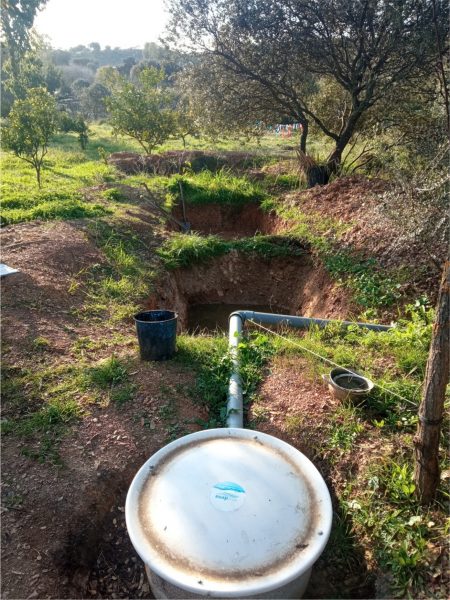

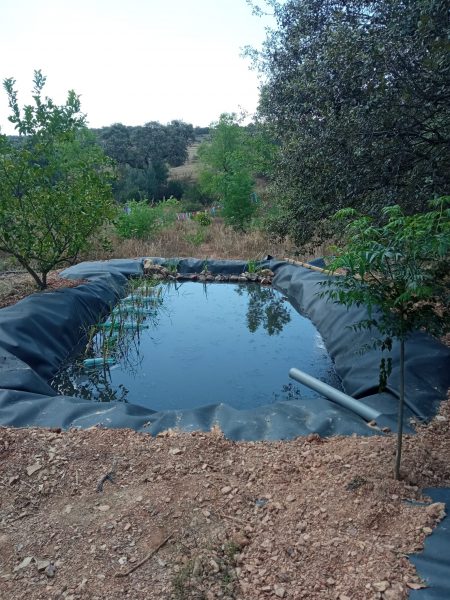

Phyto-purification systems, also known as artificial wetlands, are completely natural purification systems that take advantage of the contribution of the purification capacity of different types of plants, as well as their high capacity to transfer oxygen to the water.
They are mainly divided into submerged flow systems like we use in Los Portales (when the water flows through a filter medium) and surface flow systems (when the water is in contact with the atmosphere).
The important advantages of phyto-purification systems are that they tend to have no energy costs, they require very little maintenace and they have excellent purification results.
The fundamental factor, which governs the purification activity of these systems, is represented by plants, among which Phragmites Australis and Typha Latifolia are the most suitable and effective.
Horizontal Submerged Flow Systemas used in Los Portales
A horizontal submerged-flow phyto purification system usually includes a pre-treatment system with a three-chamber septic tank in case of blackwater treatment or a grease trap if only grey water is treated. Grease hinders aerobic processes, the diffusion of oxygen in the water and the degradation of organic matter and therefore needs prior separation.
During the passage of the water between the plant roots, the main purification processes are:
- The decomposition of organic matter by micro-organisms
- The reduction to nitrites, if there is enough organic matter
- The absorption of phosphorus and heavy metals on the filtering material.
The functioning of a phyto-purification system is based on the slow movement of water through a gravel filter medium, and with the help of aquatic plants, rooted in the same filter medium.The plants contribute to the development of an efficient aerobic microbial population in the areas closest to the roots and they transfer atmospheric oxygen to the water, through the leafy part of the plants. These specialised bacteria lead to the almost complete disappearance of pathogens in the waste water.
The depuration ponds are sealed with waterproof synthetic HDPE or PVC geomembranes to prevent water leaks into the underlying soil.The most commonly used filter materials are gravel and stones, with different granulometries. These materials also serve as support for the aquatic plants that develop their roots in there.
Horizontal submerged flow natural systems are the only treatment systems that do not require electrical energy for their operation, that have a very high purification performance, do not produce bad odours and need very little maintenance. There are various ways of disposing of the purified water; in Los Portales we build a little pond that is used for the watering of our fruit trees. Other ways could be infiltration or storing the water in a deposit for further use.